Have you ever wondered how many calories are in a pie crust? The nutritional content of pie crust can vary depending on the ingredients used. In this section, I will explore the truth about its calorie count and provide insights into its overall nutritional composition.
Pie crust usually contains 35g of total fat, 9g of saturated fat, and 48g of carbohydrates per 100g serving. It also provides 6g of protein and varying amounts of essential vitamins and minerals like vitamin B3, iron, and calcium.
Key Takeaways:
- Pie crust has a high energy density and provides a significant amount of calories per gram of food.
- Although pie crust is a good quality carbohydrate food, it is not particularly nutrient-dense compared to other foods.
- Pairing pie crust with complementary foods like meat, fish, vegetables, and greens can enhance its nutrient content.
- There are different types of pie crusts, each with its own unique characteristics and flavors.
- To make a good pie crust, remember to use cold ingredients and handle the dough gently.
Understanding Pie Crust Nutrition Facts
Pie crust can vary in its nutritional content depending on the ingredients used. A 100g serving of pie crust typically contains 35g of total fat, 9g of saturated fat, and 48g of carbohydrates. It also provides 6g of protein and varying amounts of vitamins and minerals, such as vitamin B3, iron, and calcium.
The carbohydrate quality score for pie crust is 4.2 out of 100, indicating that it is a good quality carbohydrate food. However, as a protein source, pie crust is incomplete and has a low protein energy ratio.
In terms of energy density, pie crust has a high energy density score of 5.3. This means that it provides a significant amount of calories per gram of food.
When it comes to nutrient density, pie crust has a low score of 9 out of 100. This means that although it contains some essential nutrients, it is not particularly nutrient-rich compared to other foods.
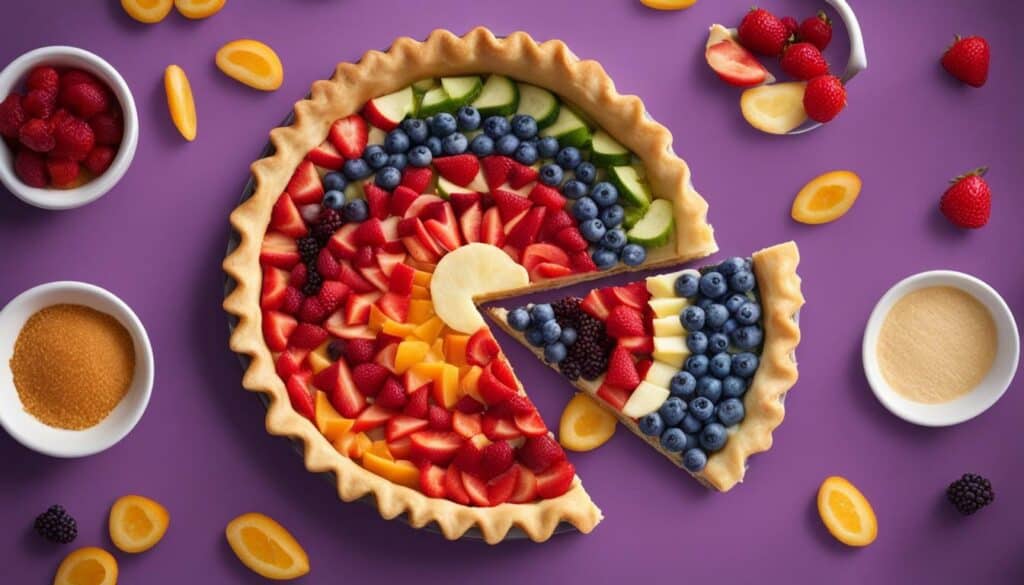
Pairing Pie Crust with Complementary Foods
To boost the nutrient content of pie crust, it can be paired with complementary foods such as meat, fish, vegetables, and greens. By adding these ingredients, you can enhance the overall nutritional value of your pie crust.
Different Types of Pie Crusts
There are different types of pie crusts, including pastry crusts, graham cracker crusts, and crumb-topped crusts. Each type has its own unique characteristics and flavors. The key to making a good pie crust is to use cold ingredients and to handle the dough gently.
To summarize, pie crust can be a delicious and versatile part of a pie, but it is important to be aware of its nutritional content. Enjoy it as part of a balanced diet and consider incorporating nutrient-rich ingredients to enhance its overall nutritional value.
| Nutritional Elements | Per 100g of Pie Crust |
|---|---|
| Total Fat | 35g |
| Saturated Fat | 9g |
| Carbohydrates | 48g |
| Protein | 6g |
| Vitamins | Vitamin B3 |
| Minerals | Iron, Calcium |
The Caloric Content of Pie Crust
A 100g serving of pie crust typically contains a certain amount of calories. It’s important to note that the exact calorie count can vary depending on the recipe and ingredients used. However, on average, pie crust contains around 400-500 calories per serving.
When it comes to calorie content, pie crust can be quite dense due to its high fat content. Fat is the main contributor to the calorie count, as it provides 9 calories per gram, compared to 4 calories per gram of carbohydrates and protein.
It’s worth mentioning that homemade pie crusts may have slightly fewer calories compared to store-bought options. This is because homemade versions often use less fat or substitute healthier ingredients to reduce the overall calorie content.
| Calorie Content of Pie Crust (per 100g serving) | Calories |
|---|---|
| Total Calories | 400-500 |
| Calories from Fat | 250-300 |
| Calories from Carbohydrates | 100-150 |
| Calories from Protein | 50-70 |
To put the caloric content of pie crust into perspective, it’s important to consider portion sizes. A typical slice of pie with a crust weighs around 100g, meaning it contains an average of 400-500 calories. Keep this in mind when enjoying your favorite pie to ensure it fits within your daily calorie intake.
Overall, pie crust can be a delicious addition to a pie, but it’s essential to be mindful of its calorie content. Enjoy it in moderation as part of a well-balanced diet and consider opting for healthier alternatives or reducing the portion size to keep your calorie intake in check.
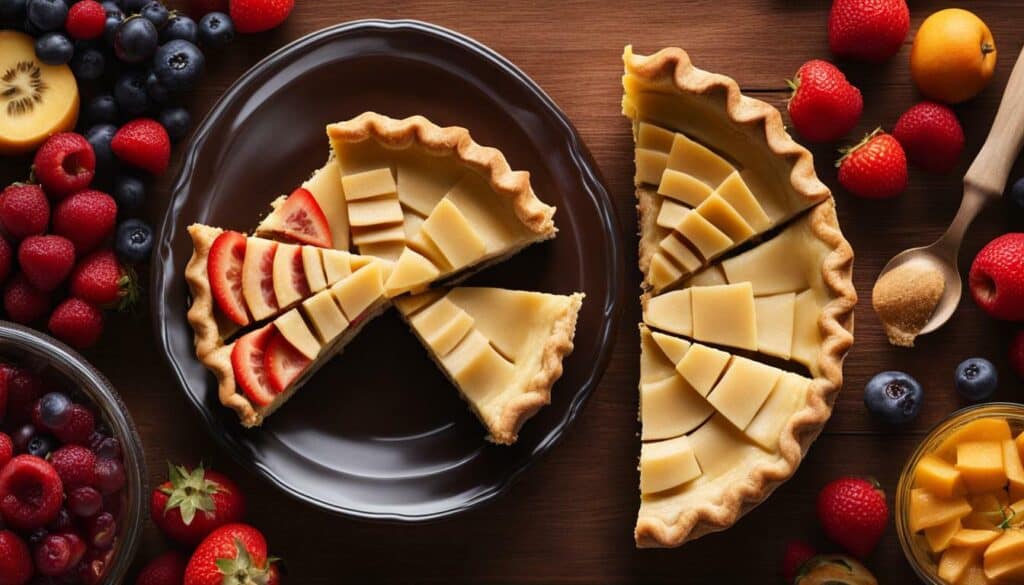
When it comes to pie crust, the fat content plays a significant role in its overall caloric value. The amount and type of fat used in the crust can greatly influence the number of calories it contains. Generally, pie crusts are made with either butter, shortening, or a combination of both.
Butter-based crusts tend to have a rich and flaky texture, but they also tend to be higher in calories. This is because butter is high in saturated fat, which contributes to its calorie content. On the other hand, shortening-based crusts are typically lower in saturated fat and therefore lower in calories. However, they may lack the same buttery flavor and flakiness.
Here is a comparison of the approximate calorie content for different types of pie crusts:
| Pie Crust Type | Calories per 100g |
|---|---|
| Homemade Butter Crust | 400 calories |
| Homemade Shortening Crust | 350 calories |
| Store-bought Butter Crust | 380 calories |
| Store-bought Shortening Crust | 330 calories |
As you can see, homemade pie crusts tend to have slightly higher calorie counts compared to their store-bought counterparts. This is because homemade crusts often require more fat to achieve the desired texture and flavor. However, making your own crust also allows you to have control over the ingredients and customize it to your preferences.
When choosing a pie crust, you can opt for a store-bought option if you’re looking for convenience and potentially lower calorie counts. However, if you prefer the taste and texture of a homemade crust, you can still enjoy it in moderation by being mindful of portion sizes and balancing it with other nutritious ingredients.

“To reduce the calorie content of a homemade pie crust, you can experiment with using a combination of butter and a healthier fat, such as olive oil or coconut oil. This will help retain the desired flavor and texture while adding a touch of nutritional value.”
Remember, the fat content of pie crust is just one aspect to consider when it comes to its overall nutritional profile. Pairing pie crust with nutrient-rich fillings and incorporating wholesome ingredients can help enhance its nutritional value and make it a more balanced part of your diet.
Protein and Nutrient Profile of Pie Crust
While pie crust is not a significant source of protein, it does contain certain essential nutrients. A 100g serving of pie crust provides approximately 6g of protein, along with varying amounts of vitamins and minerals. It is important to note that the nutritional content of pie crust can vary depending on the ingredients used and the recipe followed.
When it comes to vitamins and minerals, pie crust contains small amounts of vitamin B3, iron, and calcium. Although these nutrients are not present in large quantities, they are still beneficial for overall health. Vitamin B3 plays a key role in energy production and brain function, while iron is essential for oxygen transport in the body and calcium is necessary for strong bones and teeth.
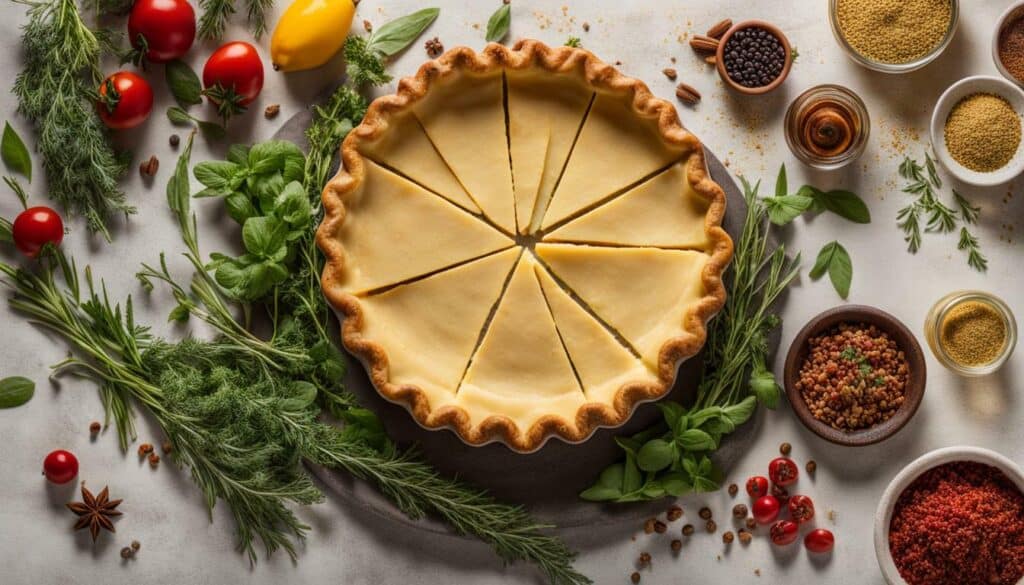
Despite its limited protein and nutrient content, pie crust can be enjoyed as part of a balanced diet. To enhance its overall nutritional value, consider pairing it with complementary foods. For example, adding a protein-rich filling such as meat or fish can help increase the protein content of your pie. Additionally, incorporating vegetables and greens into your pie can provide added vitamins, minerals, and fiber.
It is worth noting that pie crusts come in different types, each with its own unique characteristics and flavors. Pastry crusts, graham cracker crusts, and crumb-topped crusts are some popular options. The choice of crust will depend on personal preference and the type of pie being made. Regardless of the type of crust, using cold ingredients and handling the dough gently are essential for achieving a delicious and flaky result.
So, while pie crust may not be the most nutrient-dense component of a pie, it can still be enjoyed in moderation as part of a well-rounded diet. By being conscious of the ingredients used and making thoughtful choices when pairing it with other foods, you can savor the delightful taste of pie while ensuring you are nourishing your body with essential nutrients.
Comparing Different Types of Pie Crusts
Pie crust comes in different variations, each offering its own distinct taste and texture. The choice of pie crust can greatly influence the overall experience of a pie. Let’s explore some popular types of pie crusts:
- Pastry Crusts: Pastry crusts are the classic choice for pies. Made with a combination of flour, butter, and water, these crusts are flaky and buttery, providing a perfect base for both sweet and savory fillings.
- Graham Cracker Crusts: Graham cracker crusts are made by combining crushed graham crackers with melted butter and sugar. They have a sweet and crunchy texture that pairs well with creamy fillings, such as cheesecake or key lime pie.
- Crumb-Topped Crusts: Crumb-topped crusts are made by mixing flour, sugar, and butter to create a crumbly topping. They are often used for fruit pies and provide a delicious contrast to the juicy filling.
Each type of pie crust has its own unique characteristics and flavors, allowing you to experiment and find your favorite. The key to making a good pie crust is to use cold ingredients and to handle the dough gently. This helps create the desired flakiness and texture. Whether you prefer a traditional pastry crust, a sweet graham cracker crust, or a crumb-topped crust, the right choice can elevate your pie to new levels of deliciousness.
The Art of Pie Making
“A pie is only as good as its crust.” – Unknown
Creating the perfect pie crust requires skill and attention to detail. From choosing the right ingredients to achieving the perfect consistency, every step contributes to the final result. Here are a few tips to help you master the art of pie making:
- Keep your ingredients cold: Cold ingredients, such as butter and water, are essential for achieving a flaky crust. Make sure to refrigerate your butter and use ice water when mixing the dough.
- Don’t overmix the dough: Overmixing can result in a tough crust. Mix the dough just until it comes together, and avoid kneading it too much.
- Let the dough rest: Resting the dough allows the gluten to relax, making it easier to roll out. Wrap the dough in plastic wrap and refrigerate it for at least 30 minutes before rolling.
- Use a light touch when rolling: Roll the dough gently and in one direction to maintain an even thickness. Avoid applying too much pressure, as this can toughen the crust.
- Bake at the right temperature: Different pie crusts require different baking temperatures. Follow the recipe instructions carefully to ensure a perfectly baked crust.
The Perfect Pie Crust: A Labor of Love
Whether you prefer a traditional pastry crust or a unique graham cracker or crumb-topped crust, the key to success lies in giving your pie crust the attention it deserves. With practice and a little bit of patience, you can master the art of pie making and create delicious pies that will leave your taste buds longing for more.
| Type of Pie Crust | Taste | Texture |
|---|---|---|
| Pastry Crust | Buttery | Flaky |
| Graham Cracker Crust | Sweet | Crunchy |
| Crumb-Topped Crust | Varies (depends on filling) | Crumbly |
Table: A comparison of different types of pie crusts, highlighting their taste and texture.
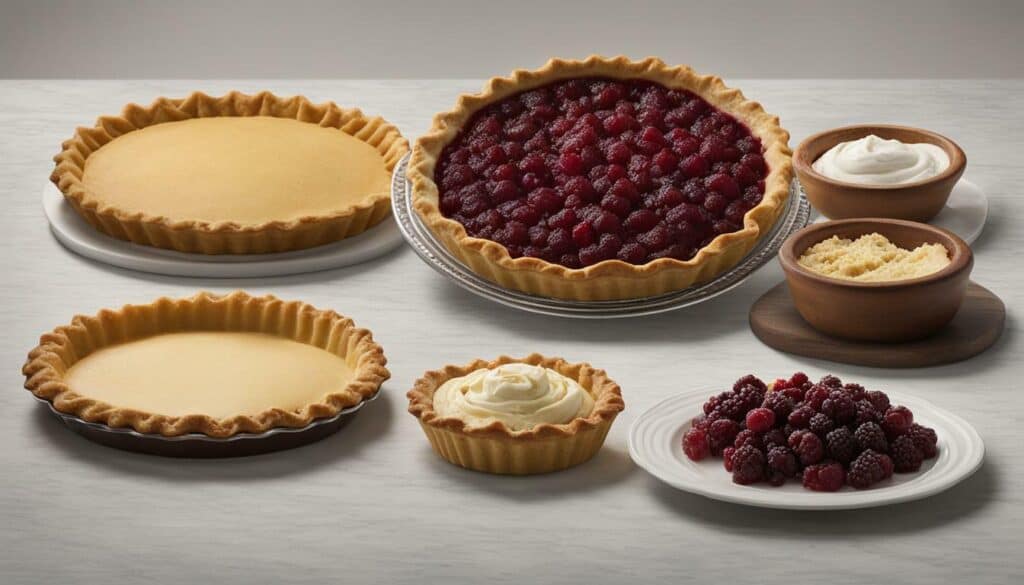
If you’re looking to make your pie crust healthier, there are a few simple steps you can take. By incorporating nutrient-rich ingredients and making mindful choices, you can create a pie crust that is both delicious and better for you.
- Opt for whole grain flour: Replace refined white flour with whole grain flour to increase the fiber content of your pie crust. This not only adds nutritional value but also gives a nuttier flavor and a slightly darker color.
- Reduce the amount of butter or shortening: While butter or shortening adds richness and flakiness to your pie crust, they also contribute to its calorie and fat content. Consider cutting back on the amount by using alternative ingredients such as Greek yogurt, applesauce, or mashed bananas.
- Add a boost of nutrition with seeds or nuts: Incorporate healthy fats and additional nutrients by adding a handful of ground flaxseeds, chia seeds, or chopped nuts to your pie crust. These ingredients not only enhance the flavor but also provide added texture.
- Experiment with alternative crust options: If you’re looking for even more ways to reduce calories and increase the nutrient content, explore alternative crust options such as using crushed nuts or seeds as a base, or even making a crust from cauliflower or sweet potatoes for a low-carb twist.
By following these tips, you can create a healthier pie crust without sacrificing taste or texture. Experiment with different combinations of ingredients to find the perfect balance that suits your preferences and dietary needs. Remember, even small changes can make a big difference when it comes to the nutritional value of your pie crust.

Making a healthier pie crust is possible by making a few simple changes. Opt for whole grain flour, reduce the amount of butter or shortening, and add a boost of nutrition with seeds or nuts. Additionally, consider experimenting with alternative crust options for even more calorie reduction. By incorporating these tips, you can enjoy a delicious pie crust that is better for you.
Pairing Pie Crust with Complementary Foods
To make the most of your pie crust, consider serving it with a variety of complementary foods. Pie crust is a versatile ingredient that can be paired with both sweet and savory fillings, allowing you to create endless flavor combinations. Whether you’re making a classic fruit pie or a hearty meat pie, choosing the right fillings and accompaniments can elevate the taste and nutritional value of your creation.
For sweet pies, pairing the buttery goodness of pie crust with fresh fruits, whipped cream, or a scoop of vanilla ice cream can create a delightful combination of flavors and textures. The sweetness of the fillings can balance out the subtle saltiness of the crust, creating a harmonious blend of tastes. You can also add a sprinkle of cinnamon or a drizzle of caramel sauce to enhance the overall experience.
If you’re making a savory pie, consider pairing the rich and flaky pie crust with hearty fillings like meat, poultry, or vegetables. The crust can provide a delicious contrast to the savory and umami flavors of the filling. Add a side of steamed vegetables or a fresh salad to create a well-rounded meal that combines the indulgence of pie with the nutritional benefits of vegetables.
Table: Pairings for Pie Crust
| Pie Type | Complementary Foods |
|---|---|
| Fruit pie | Fresh fruits, whipped cream, vanilla ice cream |
| Meat pie | Steamed vegetables, fresh salad |
| Vegetable pie | Yogurt sauce, mixed greens |
Experimenting with different pairings can add depth and dimension to your pie crust creations. Don’t be afraid to get creative and try new flavors. The key is to find complementary foods that balance the taste and enhance the overall enjoyment of your pie.
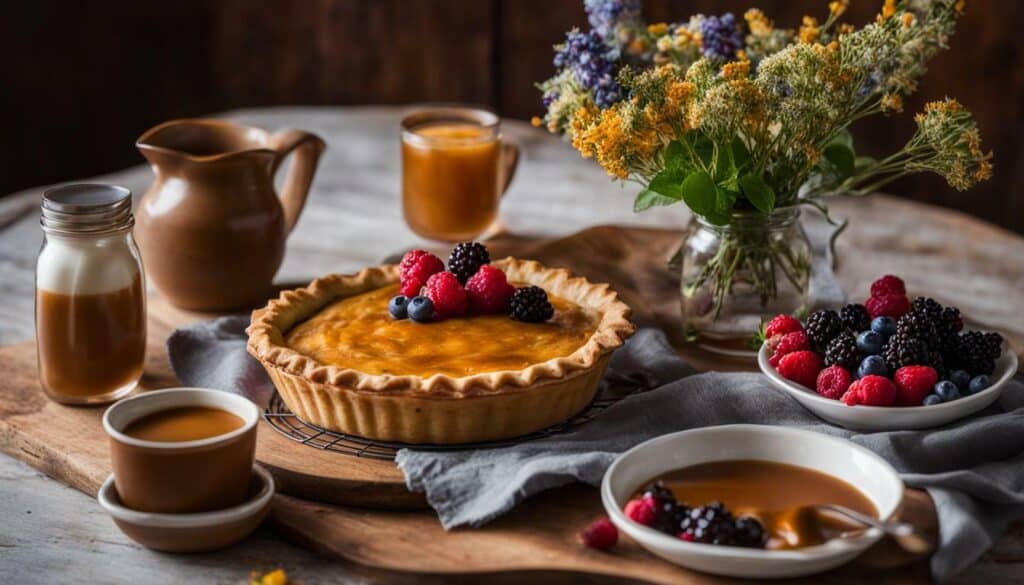
The Importance of Handling Pie Crust Properly
Properly handling the dough is crucial when it comes to making a delicious and nutritious pie crust. Whether you’re using a homemade recipe or a store-bought option, following proper handling techniques ensures that your crust turns out flaky, flavorful, and visually appealing.
One key aspect of handling pie crust is keeping the ingredients cold. This helps to create a tender and crispy texture. Start by chilling your butter or shortening before incorporating it into the dough. Additionally, refrigerate the dough for at least 30 minutes before rolling it out. This prevents the fat from melting too quickly and results in a more tender crust.
Another important factor is to handle the dough gently. Overworking the dough can lead to a tough and chewy crust. When mixing the ingredients, use a light hand and avoid excessive kneading. Additionally, be careful not to stretch or press the dough too much when rolling it out. Instead, aim for an even thickness and smooth edges.
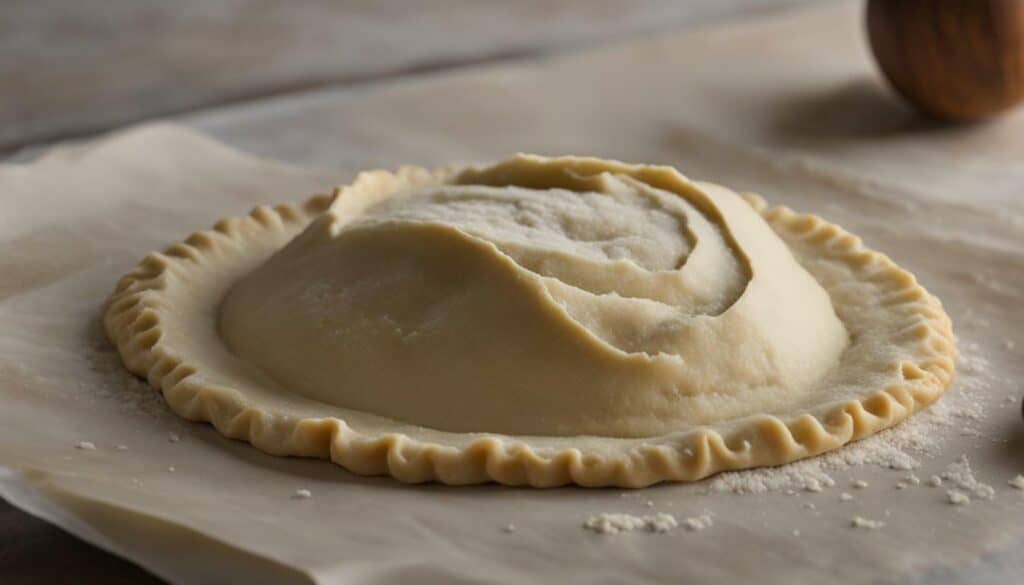
By taking the time to handle your pie crust properly, you can elevate its taste and texture. A well-executed crust adds a delightful balance to the sweet or savory filling, making every bite a memorable experience.
So, the next time you’re preparing a pie, remember the importance of proper dough handling. Follow these tips, and you’ll be on your way to creating a pie crust that is both delicious and nutritious.
Conclusion
Pie crust can be enjoyed as part of a balanced diet, but it’s essential to be mindful of its calorie content and make informed choices. A 100g serving of pie crust typically contains 35g of total fat, 9g of saturated fat, and 48g of carbohydrates. While it does provide 6g of protein and some essential vitamins and minerals, its nutrient density is relatively low compared to other foods.
To boost the nutrient value of pie crust, consider pairing it with complementary foods such as meat, fish, vegetables, and greens. This can help enhance its overall nutritional profile and provide a more balanced meal.
It’s also important to note that different types of pie crusts, such as pastry crusts, graham cracker crusts, and crumb-topped crusts, have their own unique characteristics and flavors. To achieve the best results, it’s recommended to use cold ingredients and handle the dough gently when making pie crust from scratch.
In conclusion, while pie crust can add a delightful touch to your favorite pies, it’s important to be aware of its caloric content and consumption frequency. Enjoy it in moderation as part of a well-rounded diet and consider incorporating nutrient-rich ingredients to enhance its overall nutritional value.
FAQ
Q: What is the nutritional content of pie crust?
A: A 100g serving of pie crust typically contains 35g of total fat, 9g of saturated fat, 48g of carbohydrates, 6g of protein, and varying amounts of vitamins and minerals.
Q: Is pie crust a good source of carbohydrates?
A: Yes, pie crust has a carbohydrate quality score of 4.2 out of 100, indicating that it is a good quality carbohydrate food.
Q: Does pie crust provide a significant amount of calories?
A: Yes, pie crust has a high energy density score of 5.3, meaning it provides a significant amount of calories per gram of food.
Q: Is pie crust nutrient-rich?
A: No, pie crust has a low nutrient density score of 9 out of 100, meaning it is not particularly nutrient-rich compared to other foods.
Q: How can I boost the nutrient content of pie crust?
A: You can pair pie crust with complementary foods such as meat, fish, vegetables, and greens to enhance its overall nutritional value.
Q: What are the different types of pie crusts?
A: The different types of pie crusts include pastry crusts, graham cracker crusts, and crumb-topped crusts, each with their own unique characteristics and flavors.
Q: How can I make a good pie crust?
A: To make a good pie crust, use cold ingredients and handle the dough gently.
Q: Is homemade pie crust healthier than store-bought?
A: Homemade pie crust may be healthier than store-bought as you have control over the ingredients used.
Q: Can pie crust be part of a balanced diet?
A: Yes, pie crust can be enjoyed as part of a balanced diet when consumed in moderation.
Q: How important is it to handle pie crust properly?
A: Handling pie crust properly is important to achieve the best results and minimize unnecessary calories.
Are Slushies Considered Low-Calorie Beverages?
Are slushies considered low-calorie beverages? The answer depends on the ingredients and size of the slushie. While some slushies can be made with artificial sweeteners or lower-calorie options, many traditional slushies contain high amounts of sugar and therefore can be quite high in calories. It’s important to check the label or inquire about the calories in a slushie before indulging.

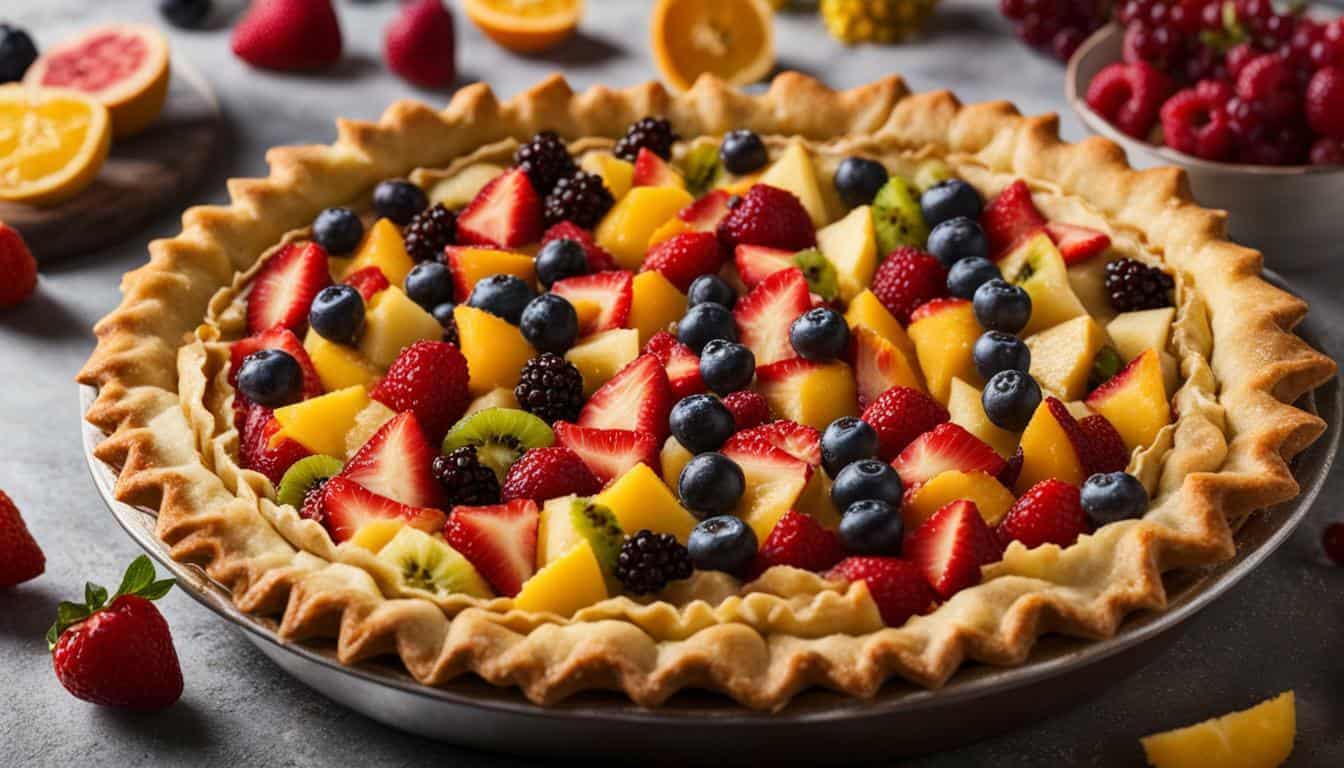



Leave a Reply